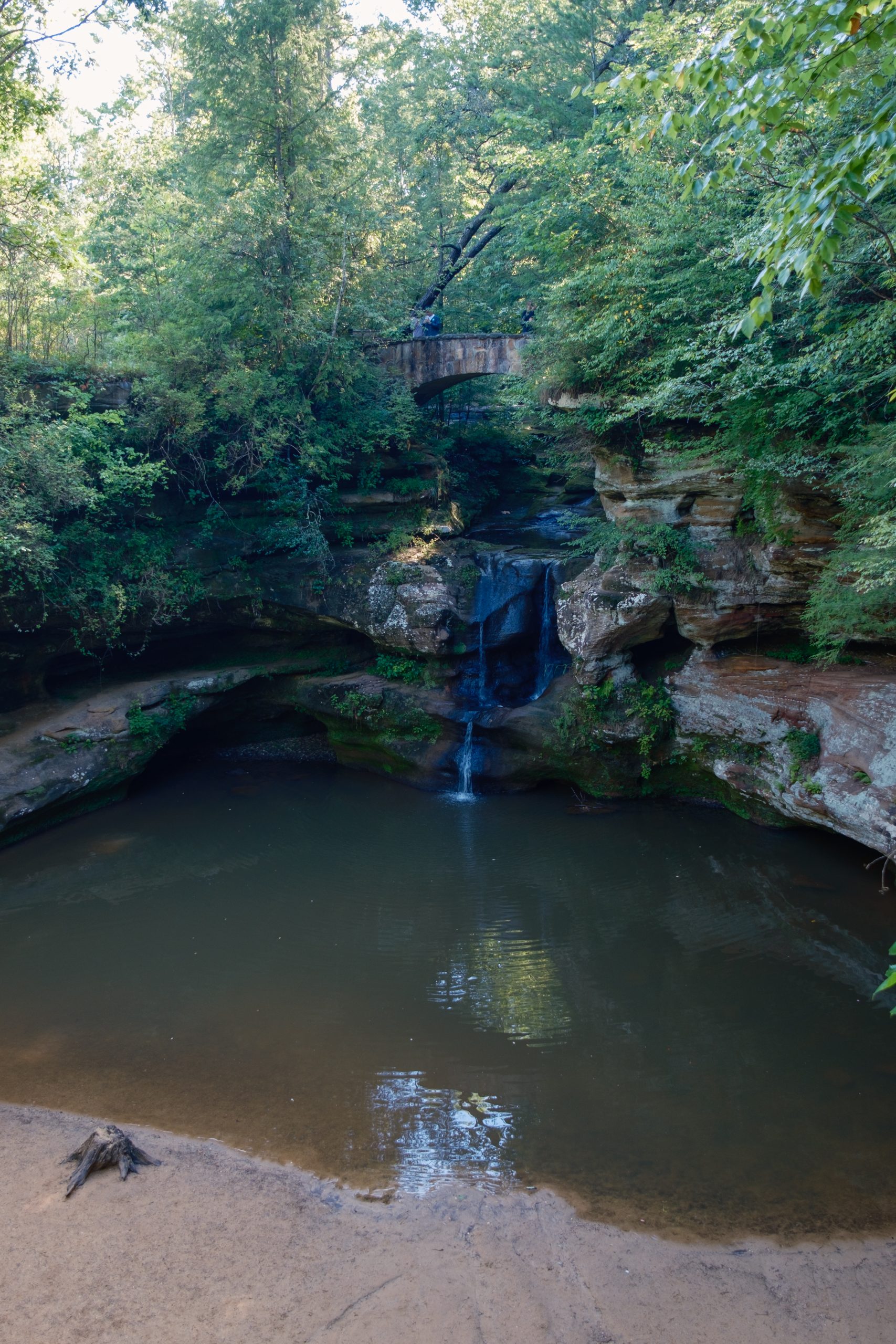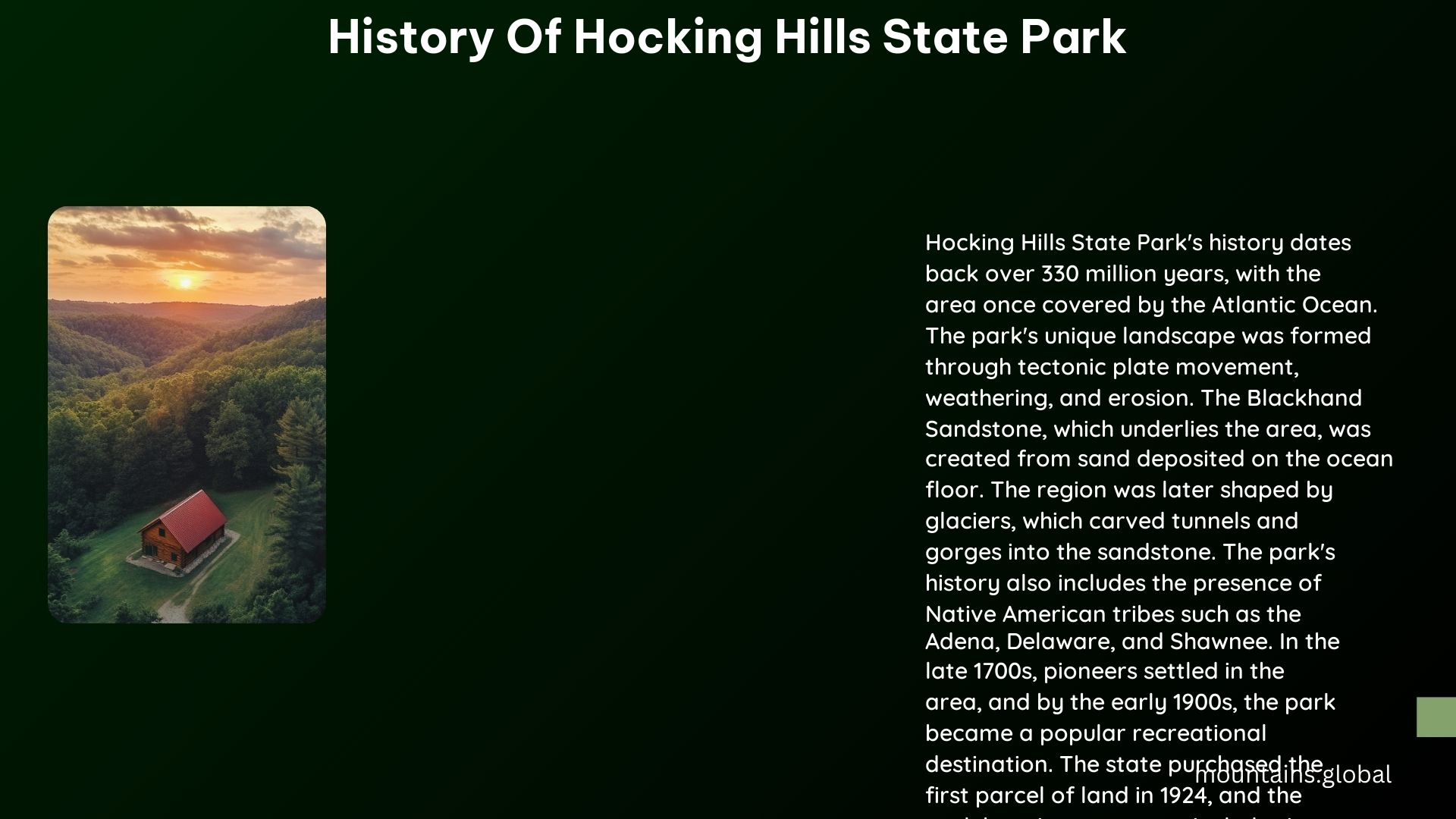The history of Hocking Hills State Park in Ohio spans thousands of years, from the early Native American inhabitants to the modern-day outdoor enthusiasts who flock to the region. This blog post will explore the rich and diverse history of this stunning natural wonder.
Early Inhabitants

Native American Tribes
The Hocking Hills region was home to various Native American tribes, including the Adena culture (moundbuilders), the Fort Ancient Indians, the Wyandot, Delaware, and Shawnee. These tribes used the rock overhangs and recesses in the area for shelter and hunted in the region.
European Settlement

Late 1700s
Permanent settlement by pioneers began in the late 1790s after the Northwest Ordinance of 1787 and the Treaty of Greenville in 1795 cleared the way for settlement in the area.
Early 1800s
Hocking County was established in 1818, and by 1820, it had over 2,000 residents. The area saw significant development with the construction of grist mills and the Hocking Canal in 1840.
Park Development
1920s
The State of Ohio purchased the first parcel of land in Hocking Hills, including Old Man’s Cave, in the 1920s. The park was initially managed by the Department of Forestry.
1930s
The Works Progress Administration (WPA) made significant improvements to the park, including the construction of trails, stone steps, bridges, roads, and tunnels.
1949
The Department of Natural Resources and the Division of Parks were formed, and the park came under their management.
1972
A dining lodge and cabins were built in the park.
2016
The dining lodge burned down and was replaced by a new lodge with 81 rooms, which opened in October 2022.
Geology and Natural Features
Blackhand Sandstone
The park’s unique landscape is formed from Blackhand sandstone, which was created over 330 million years ago when the area was covered by the Atlantic Ocean. The sandstone was formed through the deposition of sand and gravel, which bonded with silica to create a hard, layered rock.
Glacial Erosion
The Wisconsin Glacier’s melting around 10,000 years ago led to significant flooding, which carved out the gorges and cliffs in the park.
Waterfalls and Caves
The park features numerous waterfalls and caves, including Old Man’s Cave, Ash Cave, and Rock House, which were formed through the erosion of the sandstone by water.
Today
Hiking Trails
The park has over 25 miles of hiking trails, including seven separate areas: Ash Cave, Cantwell Cliffs, Cedar Falls, Conkle’s Hollow, Old Man’s Cave, Rock House, and Whispering Cave Trail.
Camping and Accommodation
The park offers various camping options, including full hookup, electric, and non-electric sites, as well as cabins and a lodge.
Visitor Center
The park’s visitor center is located at the Old Man’s Cave parking lot and features interactive displays, exhibits, and wildlife showcases.
Hocking Hills State Park is a true gem of Ohio, offering visitors a unique and unforgettable experience that showcases the region’s rich cultural and geological history.
Reference:
– Hocking Hills State Park
– Ohio History Central
– Ohio Department of Natural Resources
